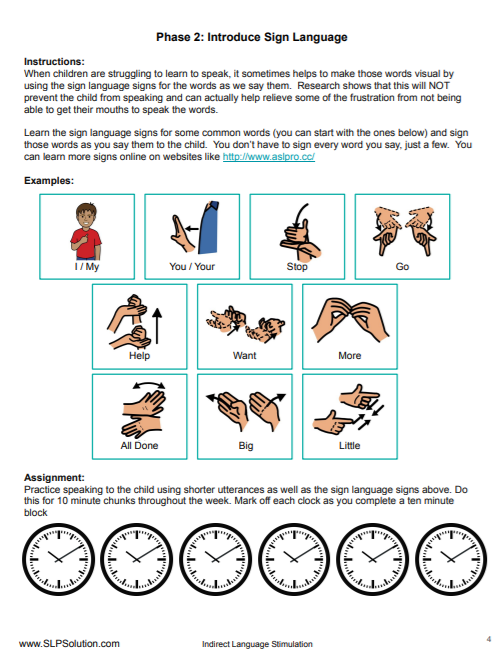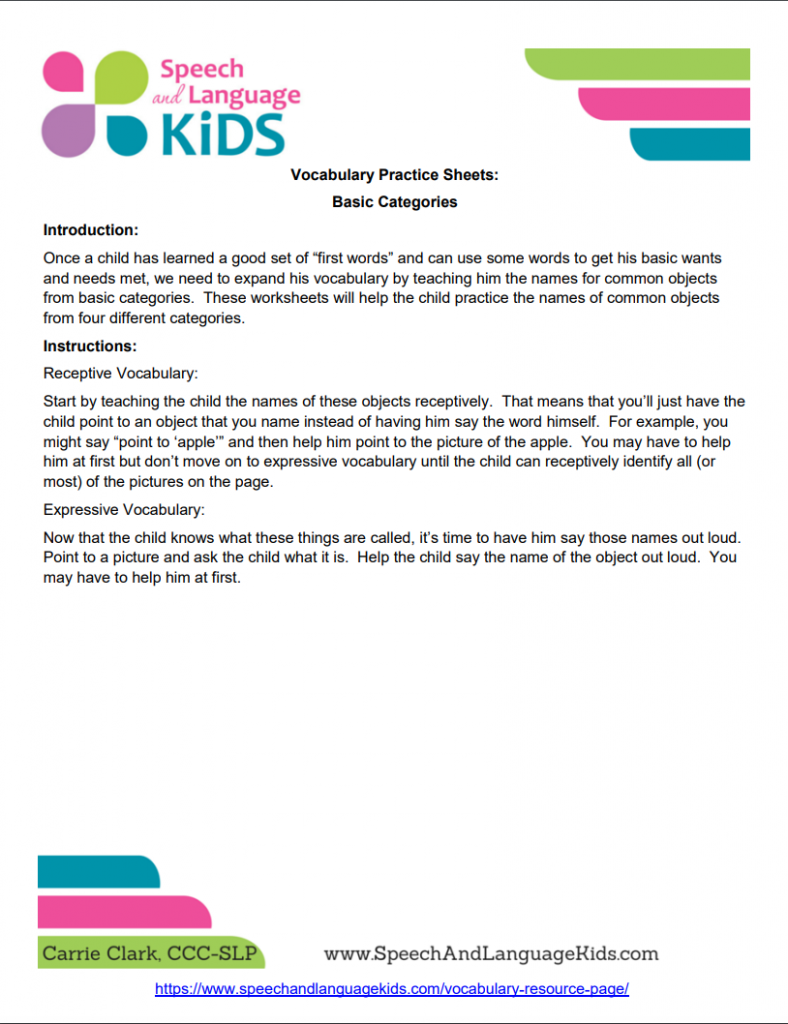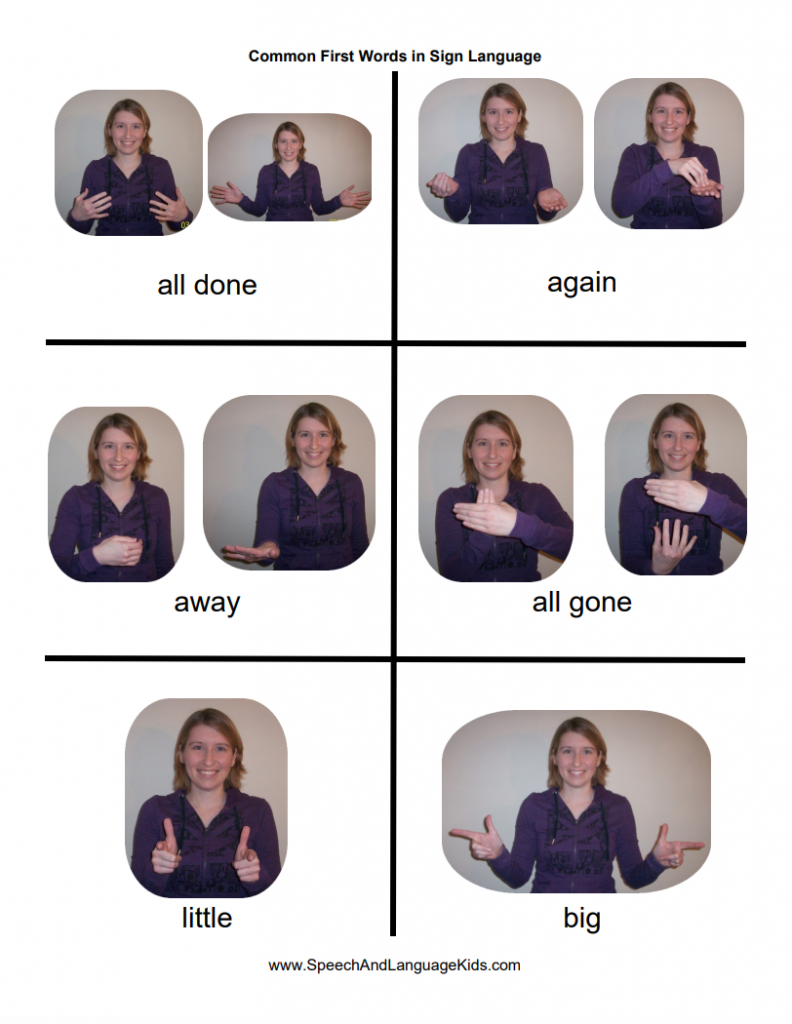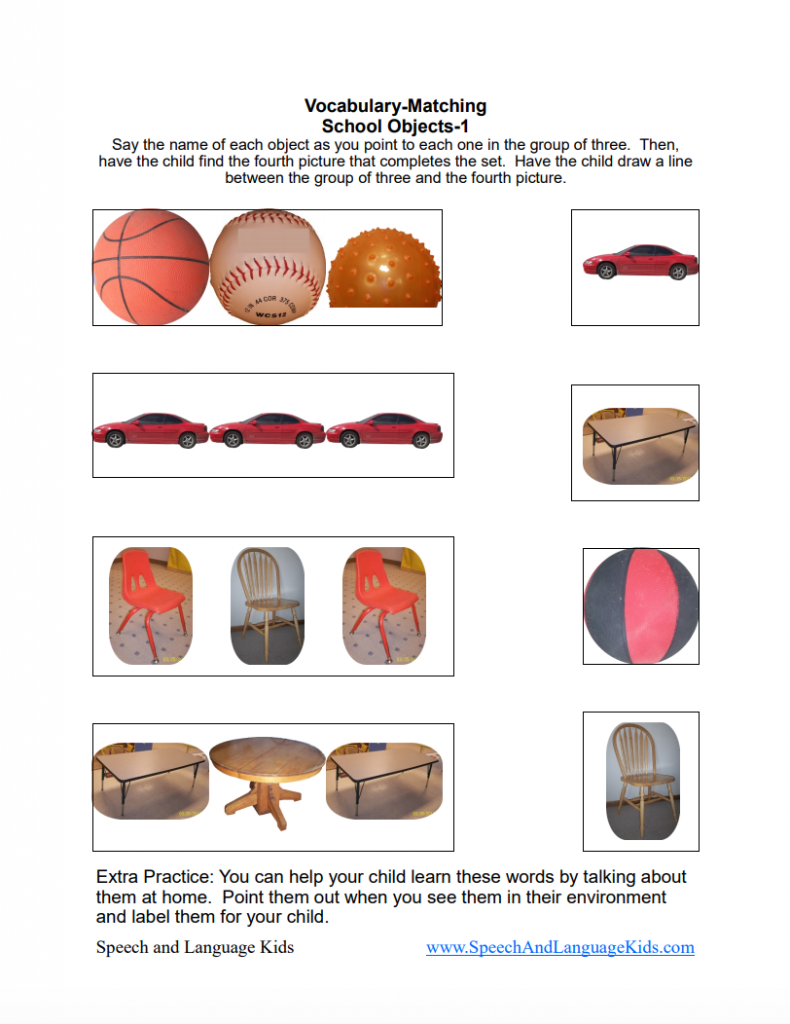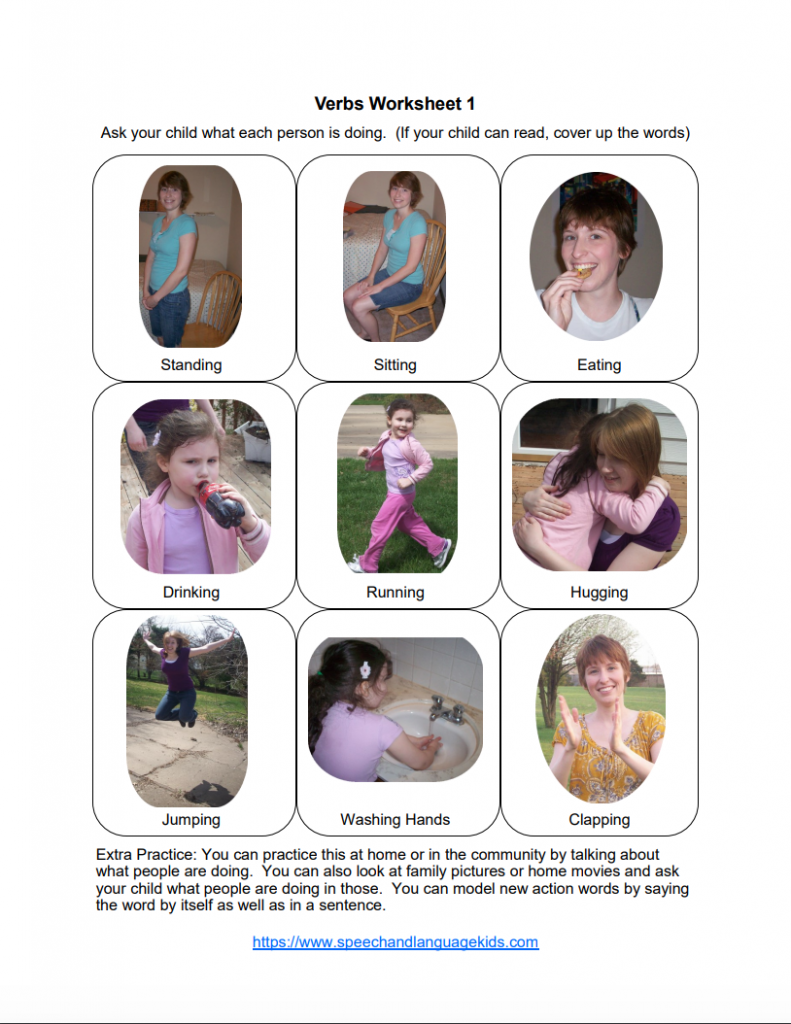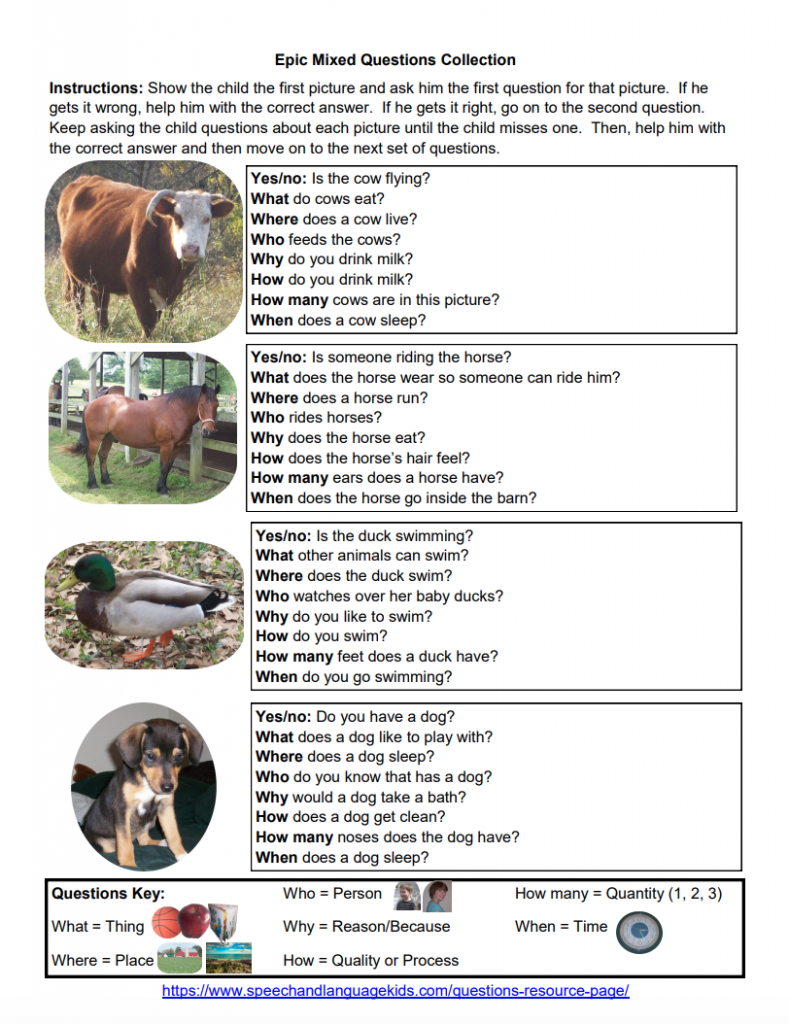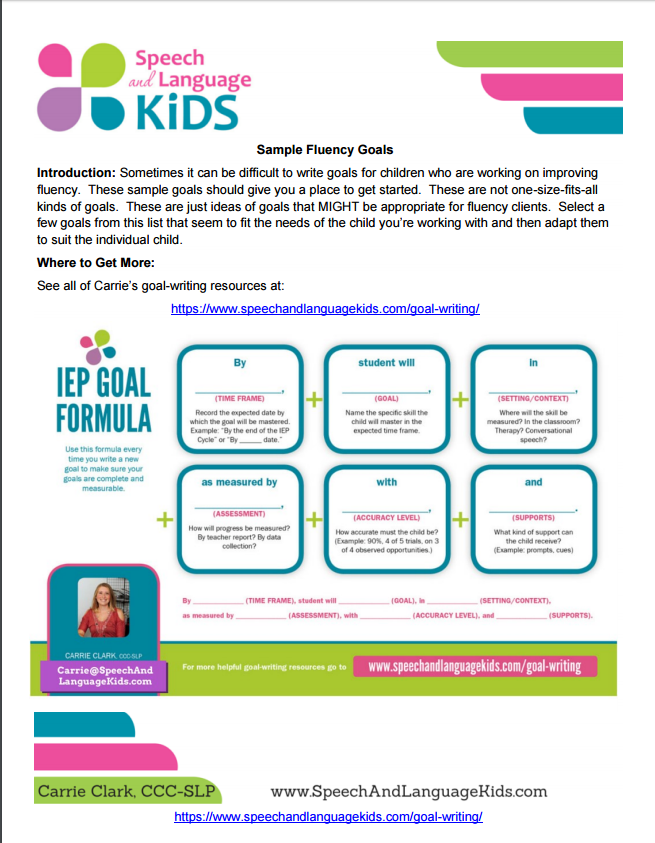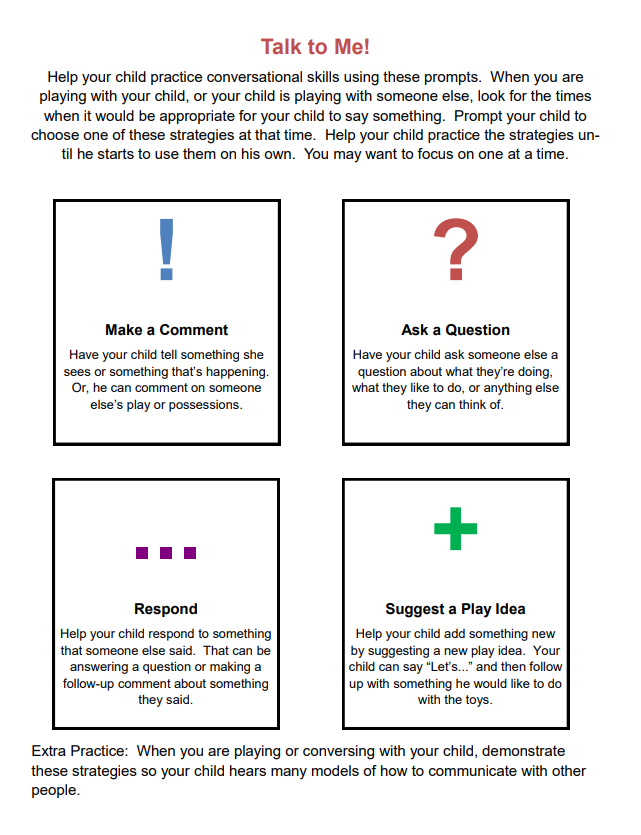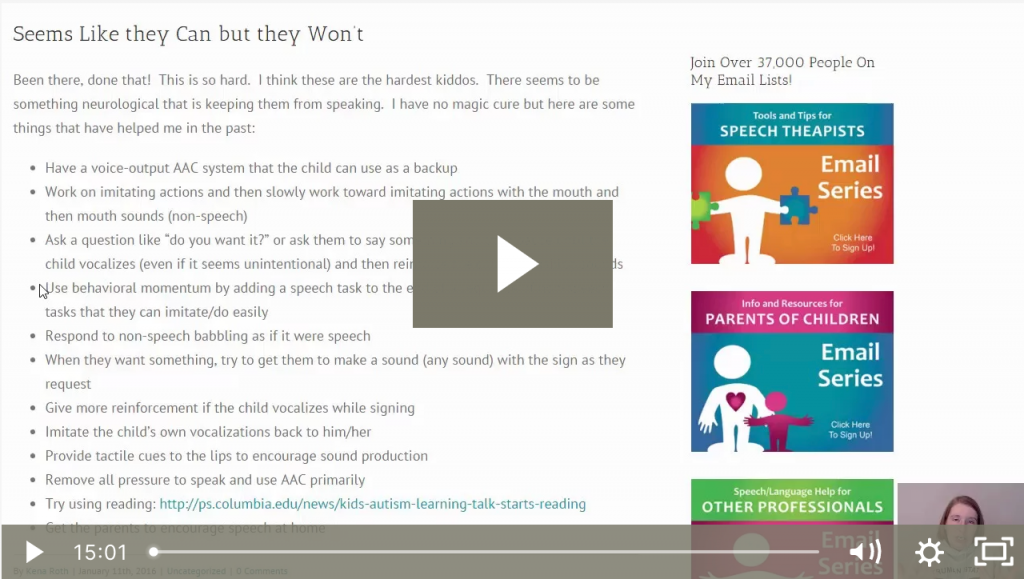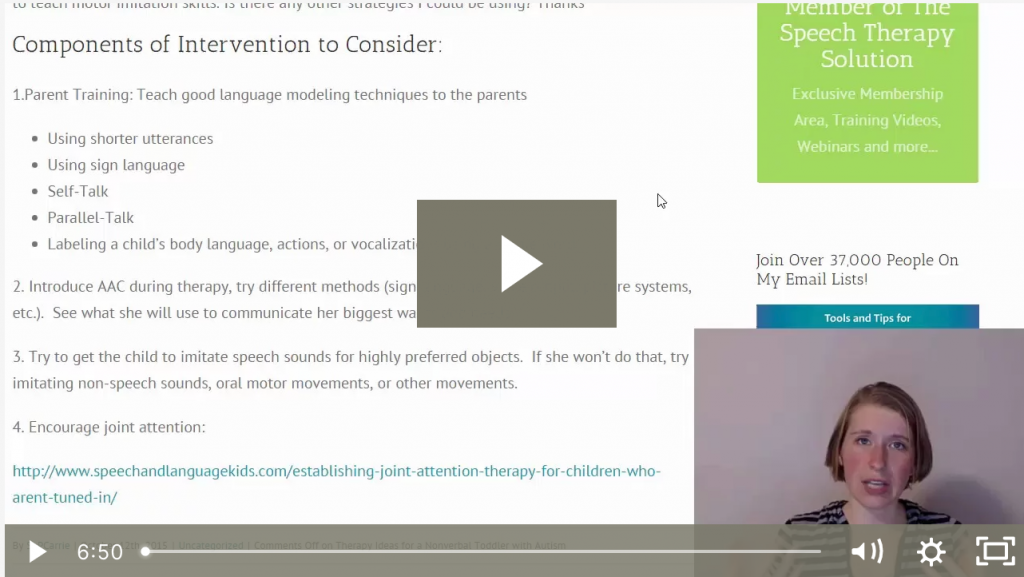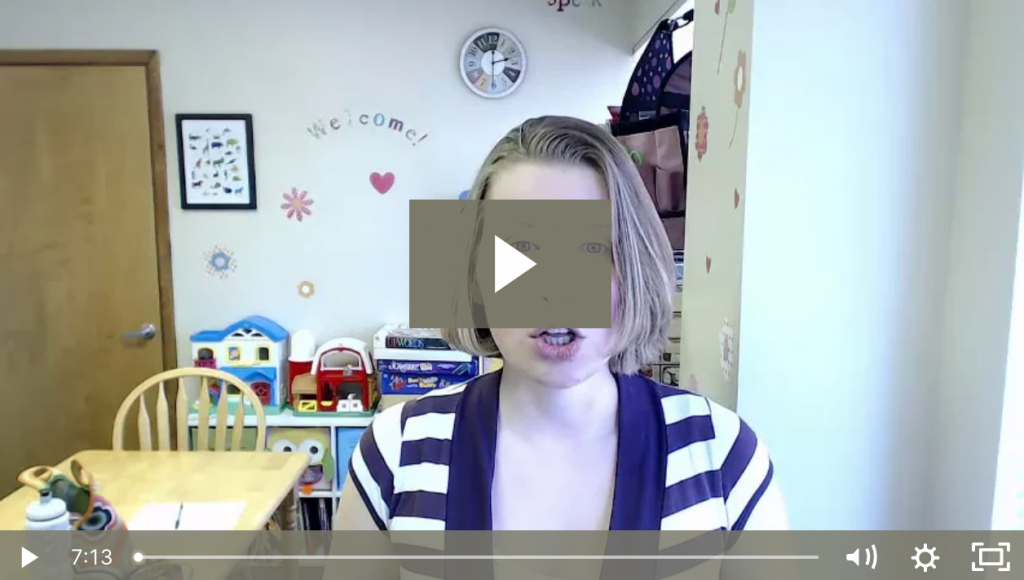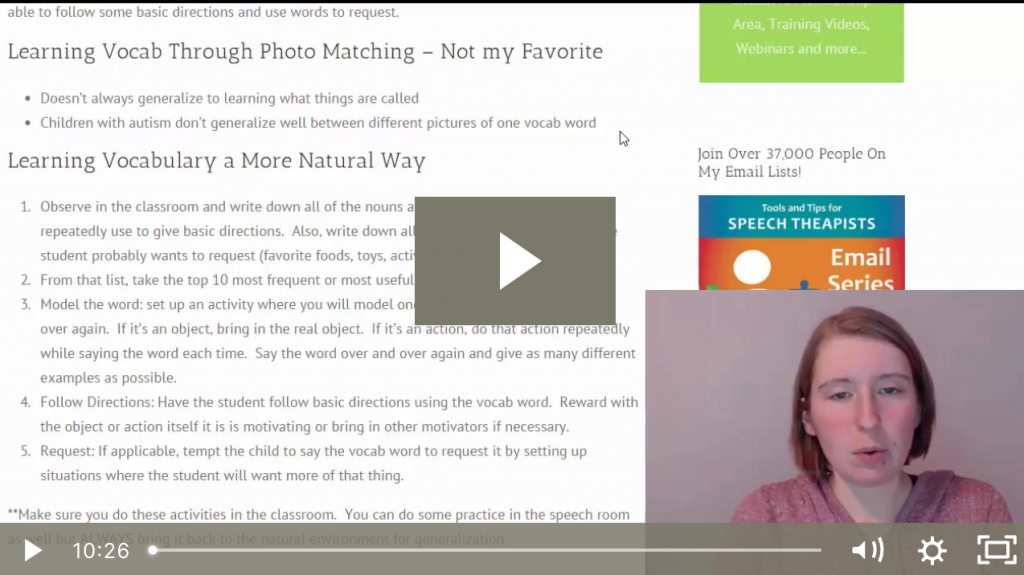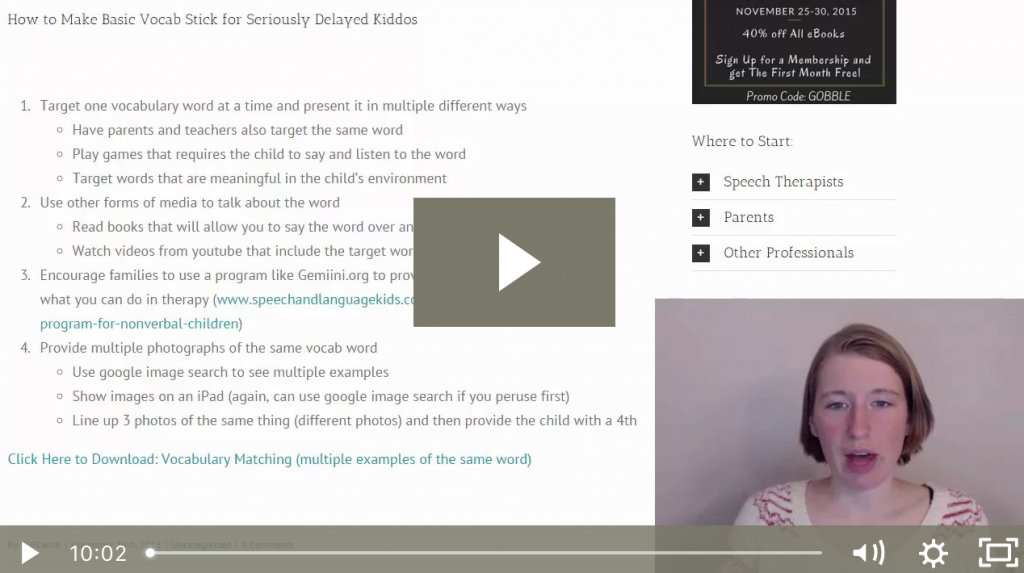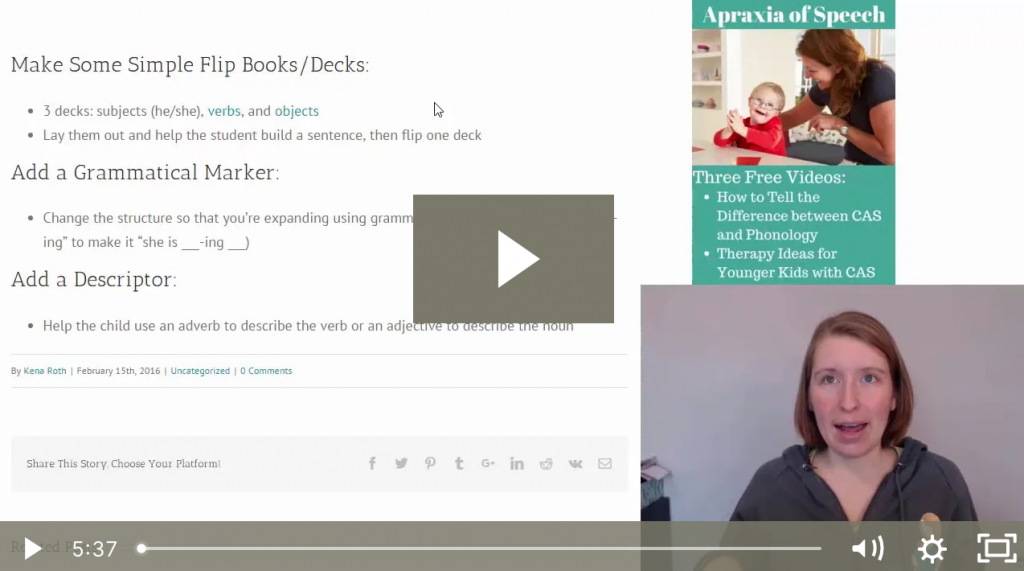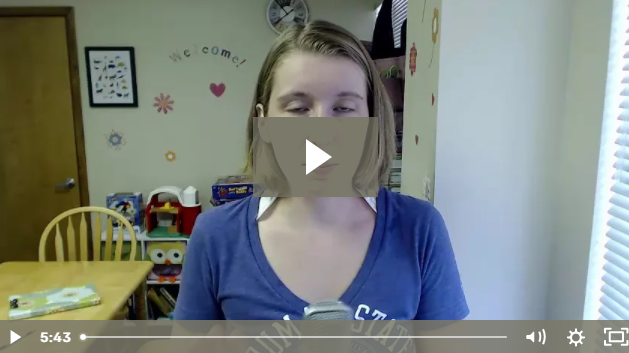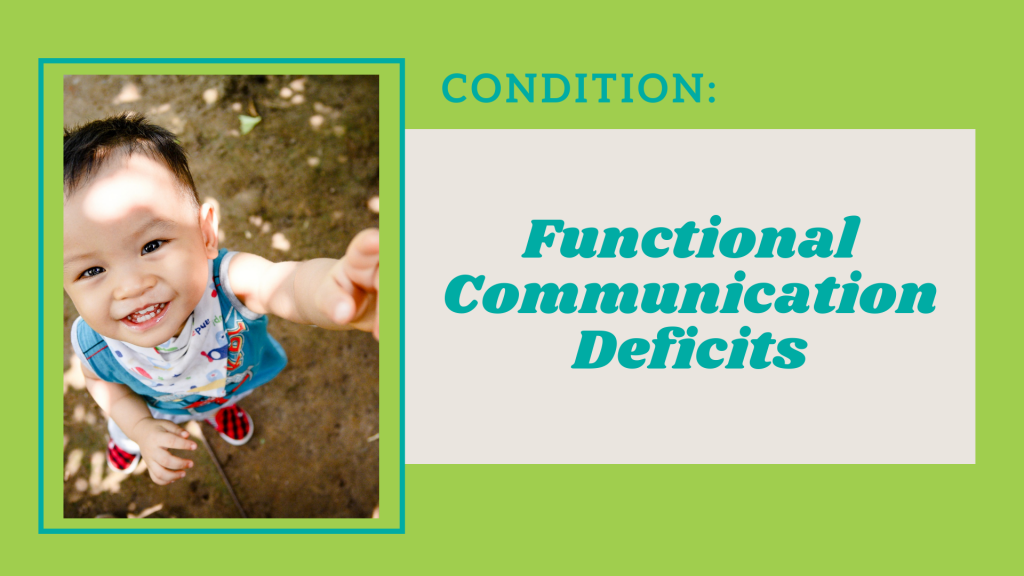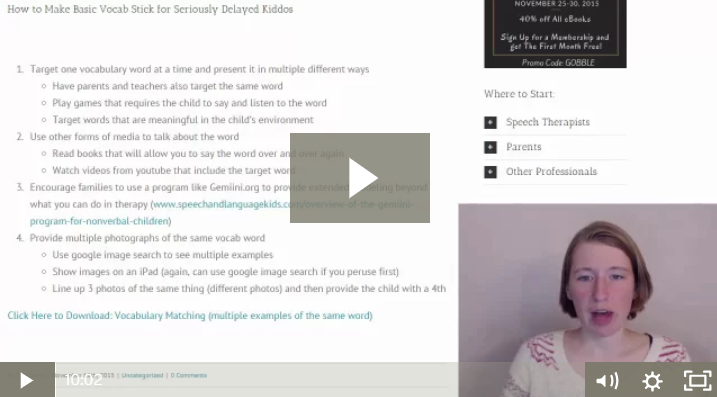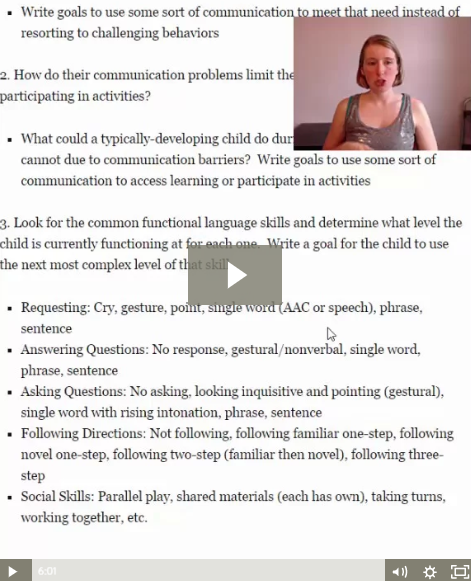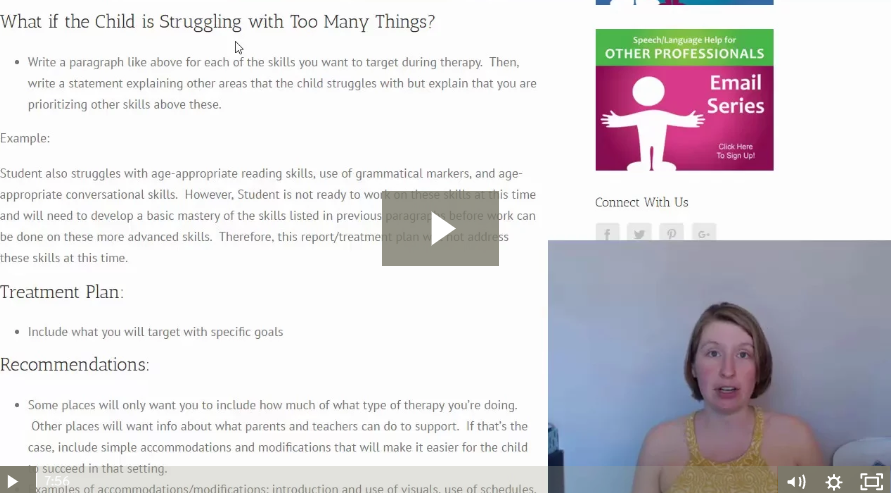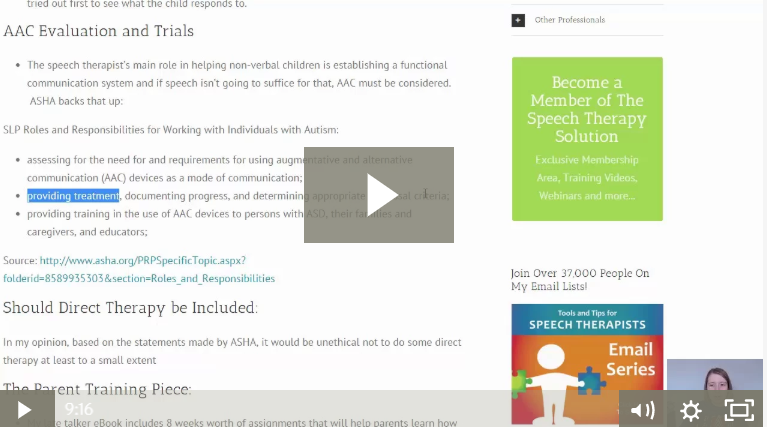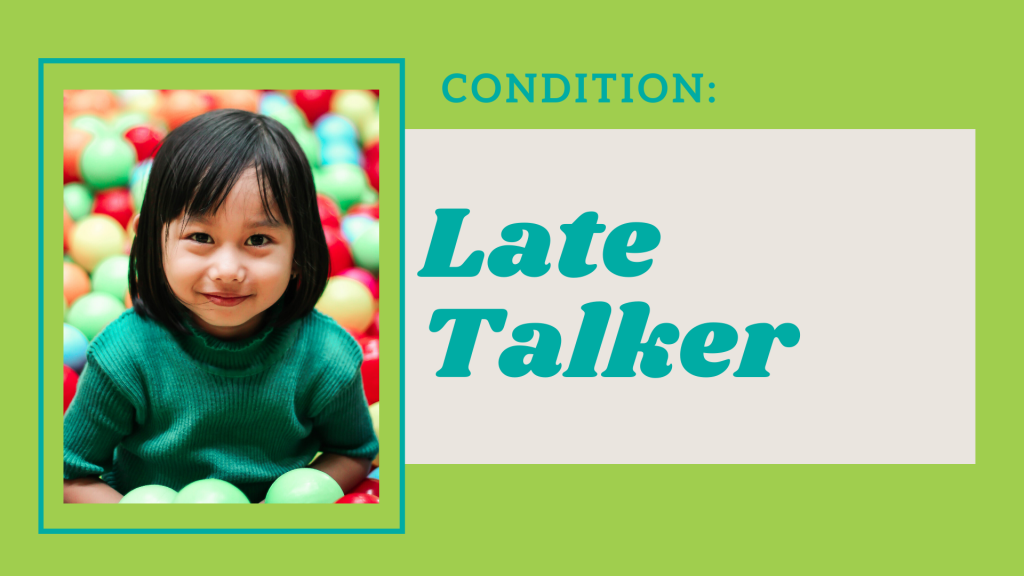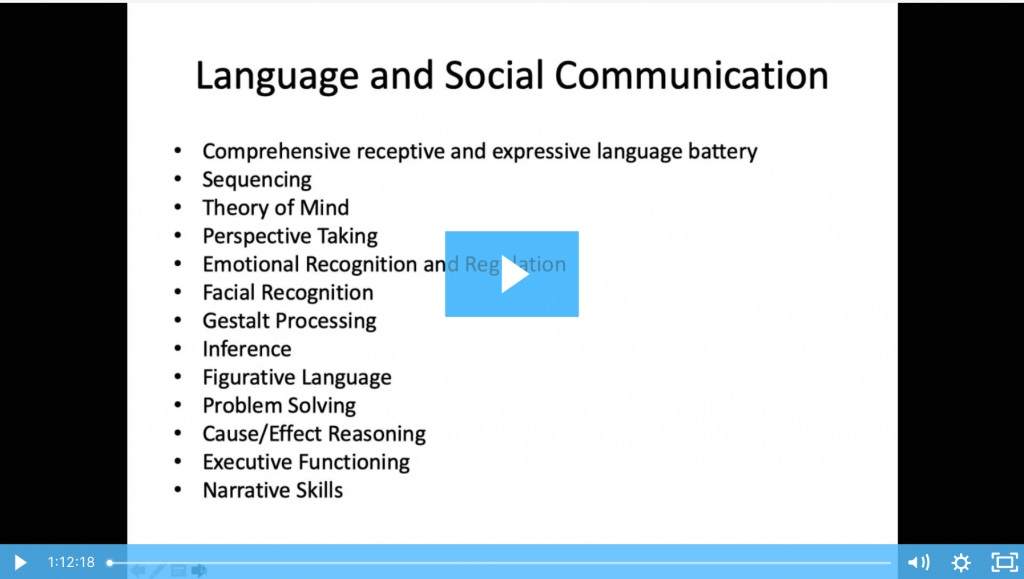Goal: Increase Spontaneous Speech Through Indirect Language Stimulation (For Non-Speaking or Minimally-Verbal Children)
For this goal, we want a child to start speaking (or start speaking more) but we are going to approach it a little differently than many of our other goals. This goal is all about using indirect methods to improve a child’s spoken output, as opposed to directly prompting the child to say them. This is a great first step when you’re working with a child who is young or has limited cognitive skills as that child may not be able to follow directions and imitate speech. This goal simply requires the child to be present while the type of language stimulation that the child is getting is changed.
For some children, this seemingly small change in the way others speak to him/her can improve their spoken output quite a bit. However, if you’re working with a child who has already been exposed to this type of language modeling and it hasn’t been effective, you can always skip ahead to more direct methods.
Sample Goal:
Client will spontaneously speak words to interact with others at least five times during a 10-minute play interaction on three consecutive data collection days.
Download the No-Prep Therapy Kit:
We have a start-to-finish therapy kit that will give you everything you need to practice this skill in therapy and send home homework. Click the packet below to open it. Then, print it out and place it in the child’s notebook or binder.
Therapy Phases:
- Use Shorter Utterances: Client will participate in a 10-minute play interaction where the adult (parent/caregiver/therapist) speaks in utterances that are the same length or one word longer than what the child typically uses. (**Customize this to the appropriate length for this client, if the child is non-speaking then utterances should be 1-2 words in length** )
- Introduce Sign Language: Client will participate in a 10-minute play interaction where the adult (parent/caregiver/therapist) uses some basic sign language signs to accompany their shortened utterances (include target utterance length in words).
- Self Talk: Client will participate in a 10-minute play interaction where the adult (parent/caregiver/therapist) uses some sign language and shortened utterances (include target utterance length in words) to talk about what they (the adult) are doing (example, “Ball. Throw Ball.”)
- Parallel Talk: Client will participate in a 10-minute play interaction where the adult (parent/caregiver/therapist) uses some sign language and shortened utterances (include target utterance length in words) to talk about what the client is doing (example, “Eat. Eat cookie.”)
- Expansions: Client will participate in a 10-minute play interaction where the adult (parent/caregiver/therapist) uses some sign language and shortened utterances (include target utterance length in words) to provide “expansions” (repeat back what was said and add one word; or, provide a one-word label for the client’s gestures or body language). (Examples: If the client says “ball”, the adult would say “throw ball”. If the client points toward the ball, the adult would simply say “ball”.)
- Receptive Vocabulary Activities: Client will participate in a 10-minute play interaction where the adult (parent/caregiver/therapist) uses some sign language and shortened utterances (include target utterance length in words) to model early vocabulary words (such as common verbs, nouns, and descriptors).
What’s Next?
- Make sure you include parents and caregivers in this process! This type of therapy won’t be very effective if the client is only exposed to it once per week during your sessions. Train parents, caregivers, and educators how to use these indirect language techniques at home and in the classroom as well. Here are a few more tips that may be helpful for parents, especially if you feel that the child may not be getting challenged enough at home:
- Communication Temptations: Keep things out of your child’s reach so he must communicate to tell you what he wants.
- Violate expectations: Give him cereal without a spoon or forget to put on one shoe and see if he communicates the error to you.
- Withhold until they sign or talk: If this frustrates your child to the extent that his behavior becomes out of control, it’s not worth it. But making children a little mad about it can get some of them to start communicating out of desperation.
- If the client begins to speak more using these indirect strategies, continue to use them as you model more vocabulary and more complex utterances. Remember to stay right at or above the level of the child (if the child starts speaking in 2-word utterances, use mostly 2- and 3- word utterances in your modeling).
- If the client does not respond to these indirect therapy methods, you can move on to more direct methods of attempting to elicit the speech sounds through repetition and prompting. You can also introduce an AAC system to help the client learn another method of communication.
Supplemental Materials
Here are some other resources that may help you when working on this skill:
Vocabulary Practice Sheets: Basic Categories
These worksheets provide extra practice for learning common words in these categories: clothing, vehicles, animals, and toys
Common First Words in Sign Language
Using sign language is a great visual support for helping children start using their first 50 words. Here is a directory of American Sign Language signs for common first words.
Vocabulary Matching Activity: Common School Objects
This simple activity shows multiple examples of photos of objects commonly found in schools and encourages matching. Great for extra practice on common objects.
Extra practice for targeting verbs in therapy.
Mixed Vocabulary and Questions Pack
Extra practice for common nouns, grouped by category. This kit contains questions as well but you can just use the pictures for vocabulary modeling.
Sample Goals for Non-Speaking Children
A list of sample goals that may be appropriate for a child who isn’t speaking yet. Use this as a starting point when brainstorming what goals to write.
Encouraging Children to Talk During Play
Some of our children may know how to speak but they typically play silently without interacting with others. This pack will help show a child different ways that he/she can interact with others during play by finding different things to say.
Training Videos:
Need some extra help on treating this skill? Check out these related training videos:
Podcast Overview of Indirect Language Stimulation

